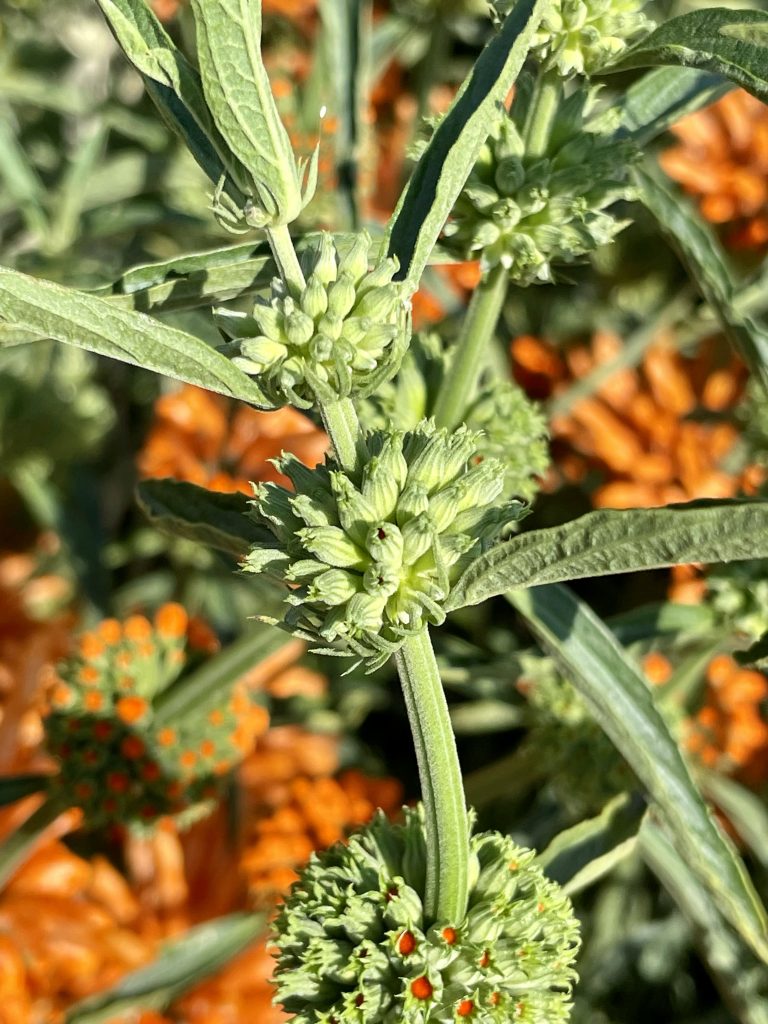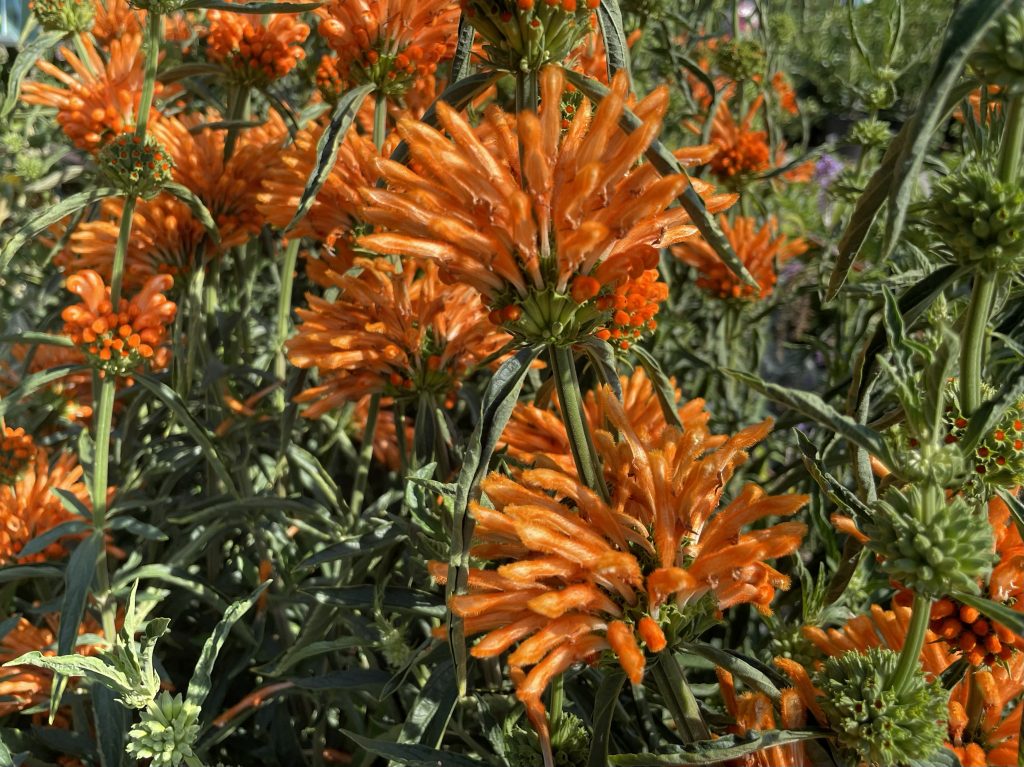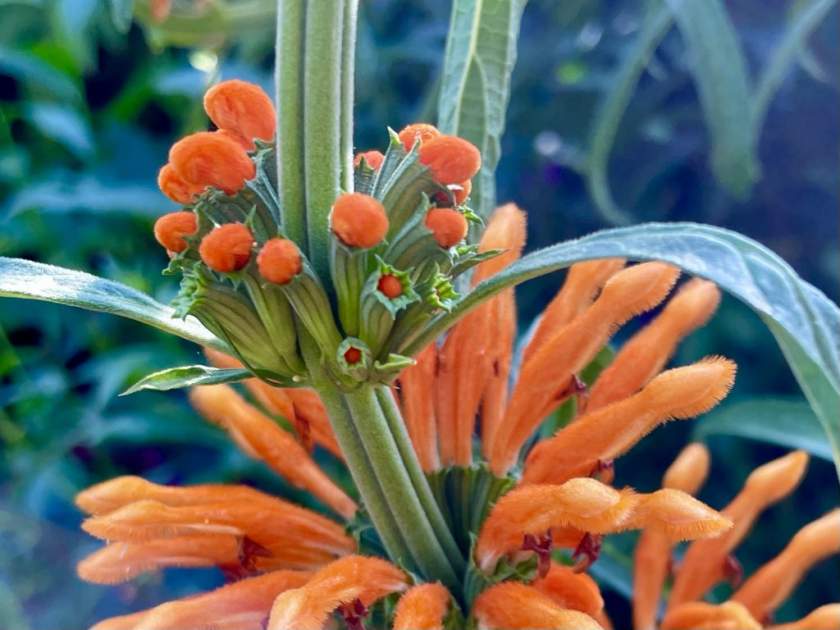Leonotis leonurus, also known as Lion’s Ear, Lion’s Tail, or Wild Dagga, is a captivating plant belonging to the Lamiaceae family, commonly known as the mint family. Native to South Africa, this erect, evergreen shrub is often found in moist grasslands. Its unique appearance and medicinal properties make it a popular choice among gardeners.
Growing to a height of approximately 6 feet or 2 meters, Leonotis leonurus boasts vibrant green, aromatic leaves that measure around 4 inches or 10 centimeters in length. The eye-catching flowers, which bloom in whorls during the summer months and sometimes continue into late autumn depending on the climate, are tubular and two-lipped, displaying a stunning shade of orange.
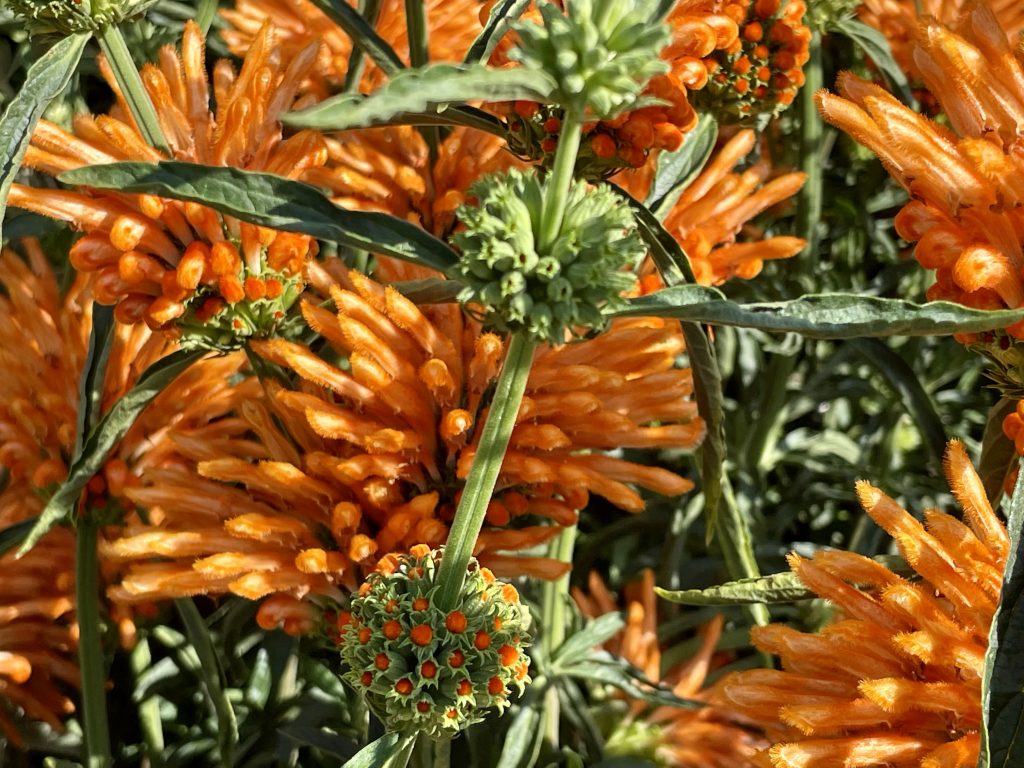
How to grow Leonotis leonurus:
Sunlight and Shade: Leonotis leonurus thrives in sunny locations, but it can also tolerate light shade. Choose a spot that receives at least six hours of direct sunlight per day for optimal growth and flowering.
Soil Requirements: This plant is adaptable to various soil types, as long as they are well-drained. It can tolerate sandy, loamy, or clayey soils. Ensure good drainage to prevent waterlogged conditions, which may lead to root rot.
Moisture and Drought Tolerance: While Leonotis leonurus appreciates moisture, it is also drought-tolerant once established. Water the plant regularly during its initial growth stages to help it establish a strong root system. Once established, it can withstand dry periods but will benefit from occasional watering during prolonged droughts.
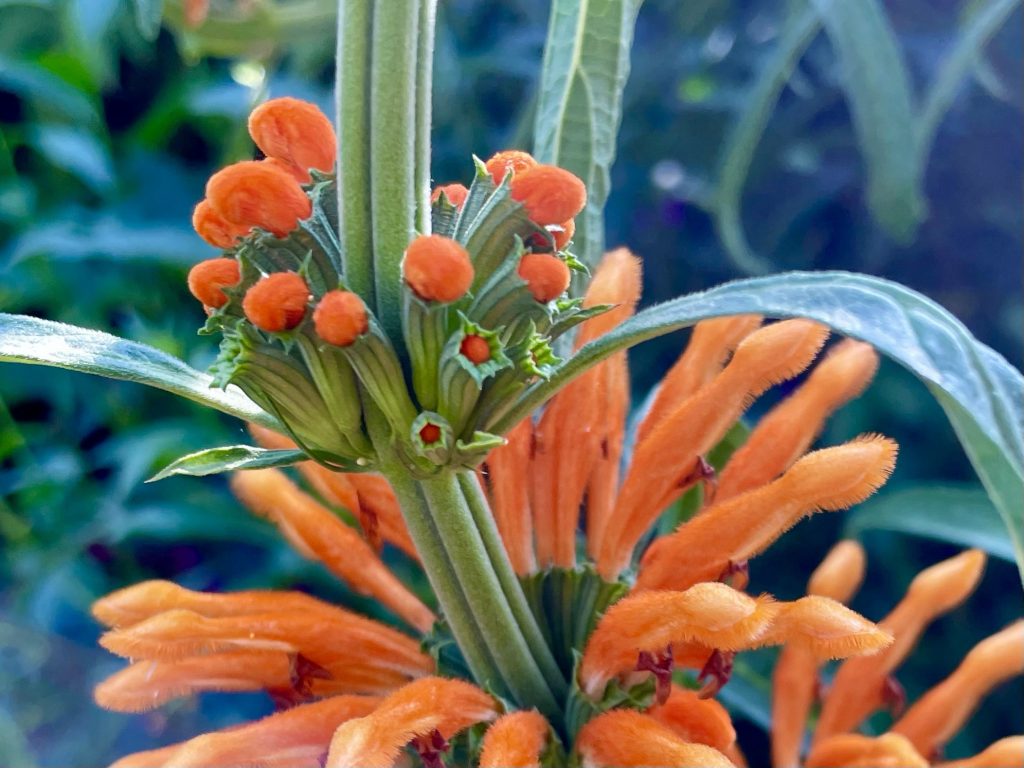
Disease and Pest Management: Generally, Leonotis leonurus is disease-free and pest-free. However, it may occasionally face challenges from whiteflies, spider mites, or grey mold. Monitor the plant regularly and take necessary measures, such as using organic pest control methods, to prevent infestations.
Wildlife Attraction: Leonotis leonurus is a magnet for wildlife, including birds, butterflies, and hummingbirds. Its vibrant flowers and nectar-rich blooms make it a favorite among these pollinators. Adding this plant to your garden will create a welcoming habitat for these beautiful creatures.
Pruning and Propagation: Pruning Leonotis leonurus each year, preferably in late winter or early spring, promotes bushier growth and encourages the plant to produce more flowers. Propagation can be done through seeds or cuttings. Collect seeds from the plant after the flowers have dried, and sow them in a suitable growing medium. Softwood cuttings can be taken in spring or early summer.
Aside from its ornamental value, Leonotis leonurus has long been recognized for its medicinal properties. The plant contains leonurine and marrubin, which are believed to possess antinociceptive, anti-inflammatory, and hypoglycemic properties. In traditional medicine, the leaves, flowers, seeds, roots, and bark of Leonotis leonurus have been used to treat various conditions such as tuberculosis, jaundice, muscle cramps, diabetes, and viral hepatitis. However, it’s important to note that proper medical consultation is recommended before using any plant-based remedies.
By following these guidelines, you can cultivate a thriving Leonotis leonurus in your garden, enjoying its striking appearance, wildlife attraction, and potential medicinal benefits.
